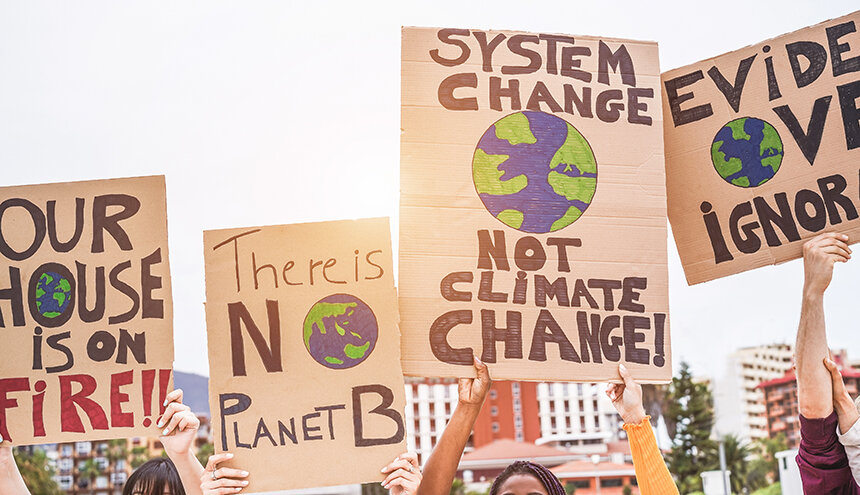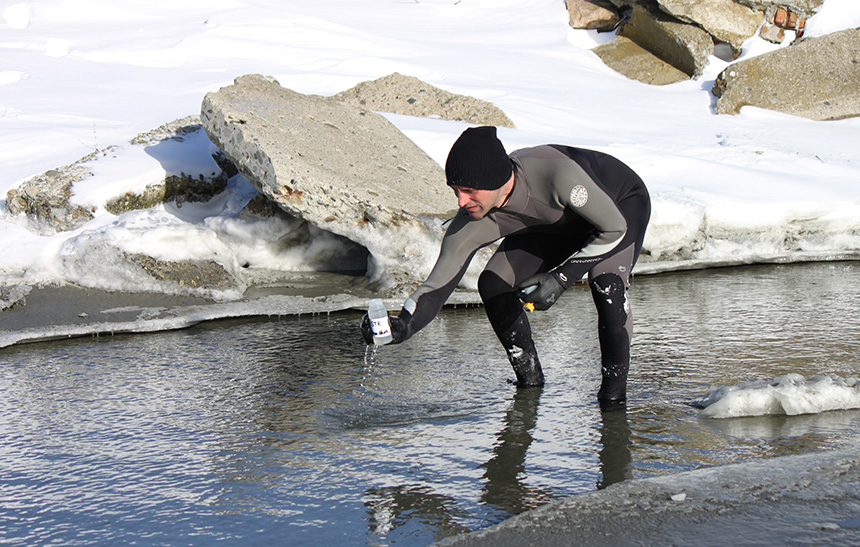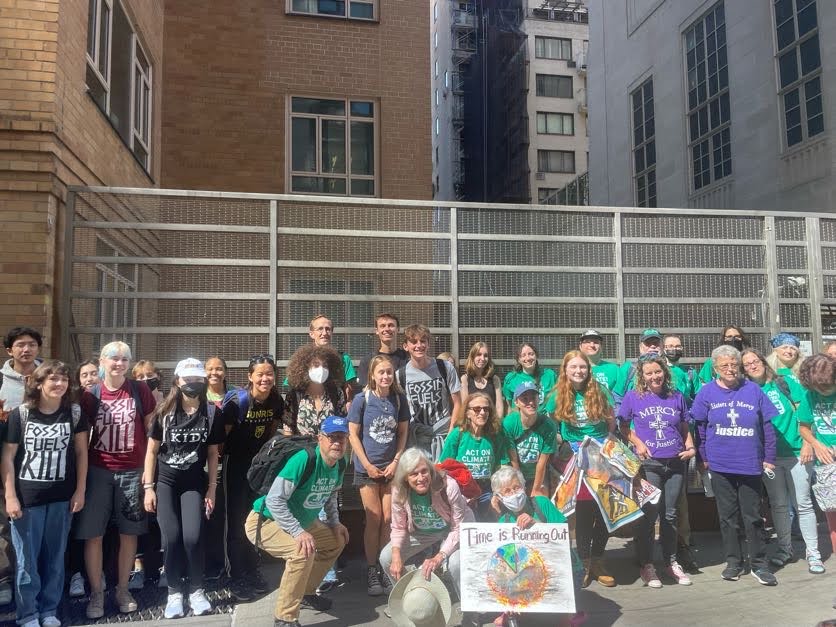South Side Says No to More LNG in Providence
July 19, 2016
PROVIDENCE — The Port of Providence could become home to another fracked-gas facility this year, if all goes according to National Grid’s plan. The proposed liquefied natural gas (LNG) compressor station is budgeted at $180 million and poses significant threats to the health and safety of residents in the area, according to a report by the Environmental Justice League of Rhode Island (EJLRI).
The area proposed for the facility is already home to several chemical-processing plants, including a Univar facility that manufactures chemicals for fracking — the Environmental Protection Agency found that this plant released 1,275 pounds of chemicals into the neighborhood in 2013.
A 2014 report by the Rhode Island Department of Health shows that South Providence residents have some of the highest rates of asthma in the state.
During the past year, community members and activists have put pressure on National Grid to halt plans for the LNG plant, construction of which is set to begin in November. At a protest June 22 at the proposed site, one Washington Park resident, Gina Rodriguez-Drix, expressed her concerns: “I live just outside the one-mile radius of the site and I have two young kids. This community is already facing so many challenges — disproportionate health issues and poverty. We are very concerned about the cumulative effect.”
Other South Providence residents share these concerns and have expressed them to National Grid, and local politicians, through demonstrations, letters and petitions. Their concerns so far have been ignored.
National Grid says the project is necessary for providing New Englanders with reliable natural gas during cold winter days when demand is at its peak. However, EJLRI claims the project is unjustified. Citing National Grid’s own data, EJLRI argues that LNG is currently only needed in Rhode Island for up to nine days annually. Most of the gas produced at the plant would be transported to Massachusetts by truck.
Neighborhood health
Residents of the South Providence and Washington Park neighborhoods would reap few of the rewards but many of the facility’s negative impacts. The plant would release toxins such as ammonia, methanol and acetone into a community that already suffers from high rates of asthma.
The plant would have a 2.5-mile “hazard zone” from which residents would have to evacuate in the case of a malfunction. LNG disasters, such as the explosion at a plant in Washington state two years ago, which injured five workers and caused an evacuation of people within 2 miles of the facility, demonstrate the types of risk associated with such facilities.
About 80,000 residents and 311 schools and several hospitals, including Providence’s only trauma center, are within the “hazard zone.”
“Just the thought of it is making me insane,” South Side resident Laura Perez said at last month’s protest. “We’re like any community: we have schools, hospitals, children, elderly people. … In 20 years, this could all be gone — who in the world wants a house next to this?”
She motioned behind her to the metal tanks, smokestacks and electricity poles blocking the view of the river. Perez, who is running for state representative in the Washington Park district, was standing with about 20 other South Side residents and activists at the site of the proposed facility. Their signs read: “National Grid Don’t Kill Our Kids,” “No LNG in PVD” and “The Southside Won’t Be Sacrificed.”
As cars passed by on Allens Avenue, some drivers slowed down to honk and wave; others sped on.
Community action
Since June, the No LNG in PVD coalition — made up of EJLRI, the The FANG Collective and local residents — has held weekly actions, alternating between demonstrations at the proposed site and community meetings/teach-ins. National Grid and local politicians, including Providence City Council member Luis Aponte, who represents the district, have continued to ignore residents’ concerns, according to the project’s opponents.
Across the country, fights against natural-gas infrastructure and expansion are often long, strenuous and unsuccessful. And local activists say South Providence’s opposition faces even greater challenges.
“South Providence is a sacrifice zone,” said Julian Rodriguez-Drix, a Washington Park resident and EJLRI board member. “The population is mostly low-income people of color. People don’t care what happens here — black lives are deemed less valuable.”
Sherrie Anne Andre, co-founder of The FANG Collective, said local politicians’ clear lack of concern for the people of South Providence discourages residents from engaging in activism.
“Door-knocking in South Providence is really depressing,” she said. “People know that the liquefaction facility is bad for the neighborhood. But if you’ve never had a voice in this community and aren’t represented by your own City Council, what’s the point in trying?”
Ultimately, local government doesn’t have control over whether the facility is built; that decision lies with the Federal Energy Regulatory Commission (FERC). The agency, according to Andre, rarely denies permits to established companies such as National Grid. Even so, she said pressure from local officials could push FERC to do a more thorough review of the project.
Trouble spot
For many South Providence residents the proposed LNG facility is just another addition to an ever-growing list of seemingly intractable problems facing their neighborhood. Rodriguez-Drix called this feeling “tragedy burnout.” He noted that with so many different issues affecting the community, it can be difficult to rally people around yet another cause.
Fear of being arrested also discourages many from participating in demonstrations and meetings, according to Rodriguez-Drix. He said the first No LNG in PVD protest at the proposed waterfront site drew between 15 and 20 people and an almost equal number of police officers.
“There was a prisoner transport van and undercover officers and lieutenants and court security and all these people standing around,” he said.
Rodriguez-Drix also noted that police presence was intense at the first demonstration organized against the LNG facility, in mid-August 2015, when about 50 members of local environmental and student groups expressed their objections to the project.
An additional challenge has been a lack of information about the project. National Grid has hosted only one public forum about its proposal, in August 2015. According to the EJLRI, the forum wasn’t well advertised and required e-mailing National Grid to ask for the time and date.
Last March, the Providence City Council passed a resolution calling for National Grid to submit a comprehensive impact statement of the facility and a comprehensive public participation plan. National Grid has failed to complete either, according to opponents.
“They don’t speak with the people, even though these are things that affect us,” said a South Providence resident named Abraham, who works at a local business on Prairie Avenue. “But that’s the business — they just do what they want.”
Abraham said he hasn’t received any notification or information about the project, which is set to be built less than a mile from his workplace.
The limited information that National Grid does provide on its website is inaccessible to many South Providence residents. All the information and materials about the plant are in English only — a serious obstacle to the South Side’s predominately Spanish-speaking population. The FERC website also is English only, which has prevented some residents from filing as interveners.
“They make the process painfully difficult even for native English speakers,” FANG’s Andre said. “It’s really hard to see people wanting to take action and not being able to.”
The EJLRI and FANG have attempted to mitigate these challenges by providing materials about the project in Spanish or Khmer whenever possible. But resources and time are limited — everyone working on the campaign is a volunteer.
These layered forms of disenfranchisement, combined with financial and social instability, have made the “hazard zone” a relatively transient area; many current residents moved to the South Side within the past few decades or years. This transience poses yet another challenge to organizing efforts against the project: many people don’t feel invested enough in the neighborhood to engage in potentially risky resistance efforts.
Those who feel such efforts are fruitless perhaps haven’t been in Providence long enough to remember that South Providence residents have, in the past, fought back against natural-gas infrastructure and won. In 2005, FERC rejected KeySpan LNG’s plans to develop a liquid natural gas facility following pressure from local officials and community members.



